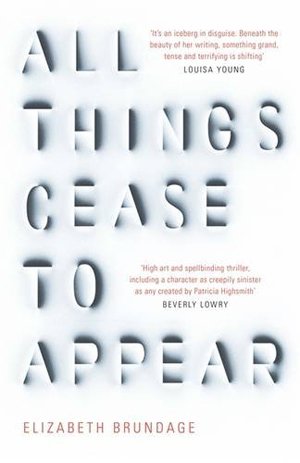
While All Things Cease to Appear does have a suspicious death and violence in it, this book is far, far removed from your conventional crime novel. Sure, it tightens the psychological screws as you read, but the suspense has more to do with atmosphere than unexpected plot twists. This is a very literary portrait of a sociopath that relies on language and subtlety to convey the horrors under an apparently tranquil surface. The pace is slow, and the lack of quotation marks for the dialogue can seem pretentious and confusing at times. Even the resolution is at best partial and may frustrate anyone who craves justice.
With all these critical points out of the way, what we can say is that All Things Cease to Apear is the perfect read if you are looking for something very different and memorable. Part rural noir, part Gothic horror, with just a powdering of the supernatural to it, this book is difficult to categorise.
The story starts with a murder in the small town of Chosen, New York, in 1979. The Pratts are about to sit down to dinner when they see George Clare and his little girl Franny (in her pyjamas) heading towards their house on foot, with no coats on despite the snowy weather. They claim that Catherine Clare, the wife and mother, has had an accident. It turns out that she is lying in bed with an axe stuck in her head. All indications appear to be that an intruder came into the house in the morning, while George was at work and Franny was still asleep, and murdered her. But not everyone is convinced that this is what happened.
The story then goes back to a year or so before the murder. The Clares have just moved into the old Hale Farm from the city. It had fallen upon hard times and they were thrilled to get it for a bargain price, but what they don’t know is that the house is thought to be cursed. The previous owners, the Hale family, went bankrupt and the parents committed suicide in the master bedroom. Their three boys were left living with their uncle in the neighbourhood.
George Clare is ambitious and self-absorbed, an art history lecturer at a small college in Chosen. His wife Catherine is a sensitive artist who has given up her career since moving to the countryside. She feels an unquiet presence in the house, but her husband hastily pooh-poohs the notion. She also establishes a motherly relationship with the Hale boys, whom they hire to repaint the place. George, however, feels that the boys begrudge them as intruders and still consider the house their own. The author carefully layers the stifling atmosphere of small-town living and the cruelty of failing marriages and psychological torture.
The story takes place over 20 years, stretching both before and after the murder shown in the opening pages. We become acquainted with three generations of women: Ella Hale, the farmer’s wife who has to give up on her dreams of becoming a nurse or even a doctor; Catherine Clare, who feels buried in the small town and uses up all her artistry to create the perfect home; and her daughter, Franny, who is training to be a doctor and is afraid of feeling anything deeply since the morning of her mother’s death. Yet it’s not a family saga. If anything, it is the saga of a house ‘noisy with stories’.
This is the kind of book that will stay with you weeks or even months after reading it, long after the impact of more obviously exciting thrillers has faded. It will appeal to readers who enjoyed In Her Wake, the unusual The Murder of Halland or the literary Korean thriller The Investigation. In other words, books where psychology and dangerous secrets are the prime focus, rather than any sort of investigation. The author has been praised for never writing the same thing twice, but each of her books certainly has a darkness to it. On her website, she describes the house which inspired this book.
Riverrun
Print/Kindle/iBook
£8.49
CFL Rating: 4 Stars